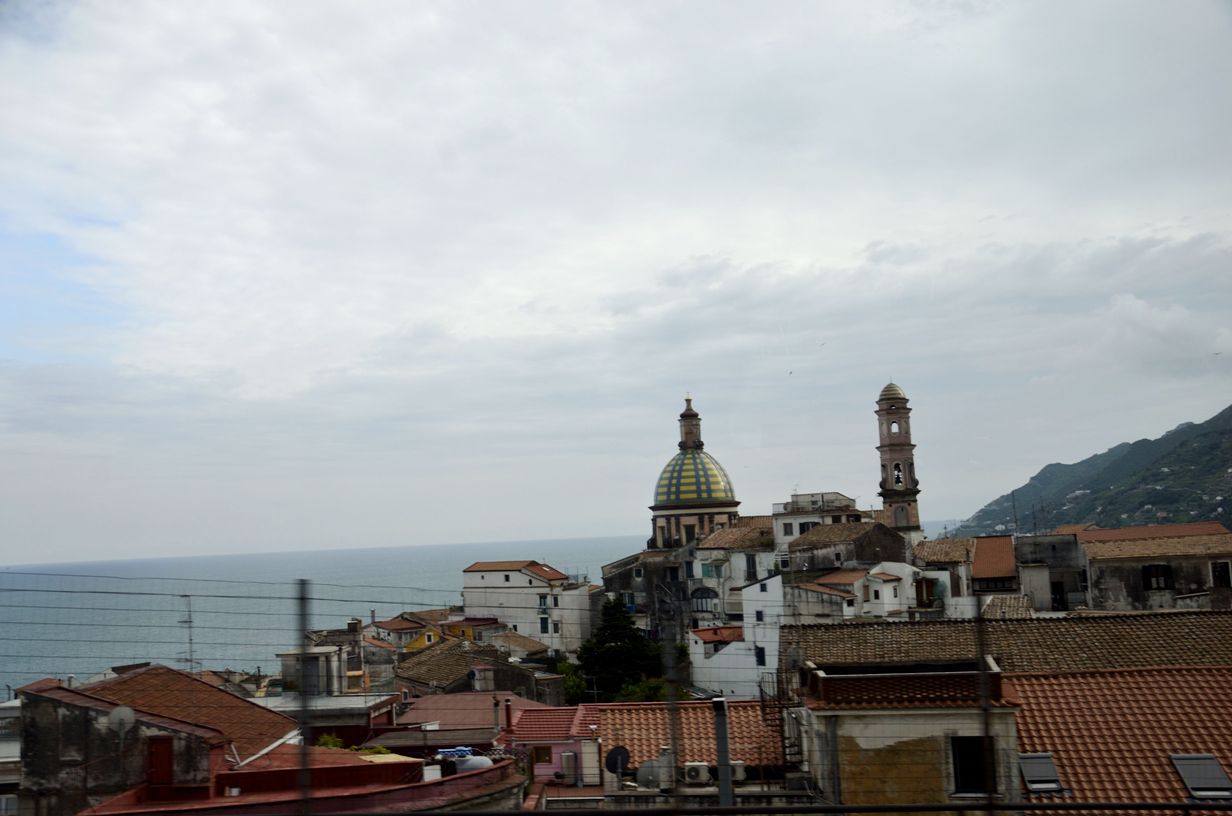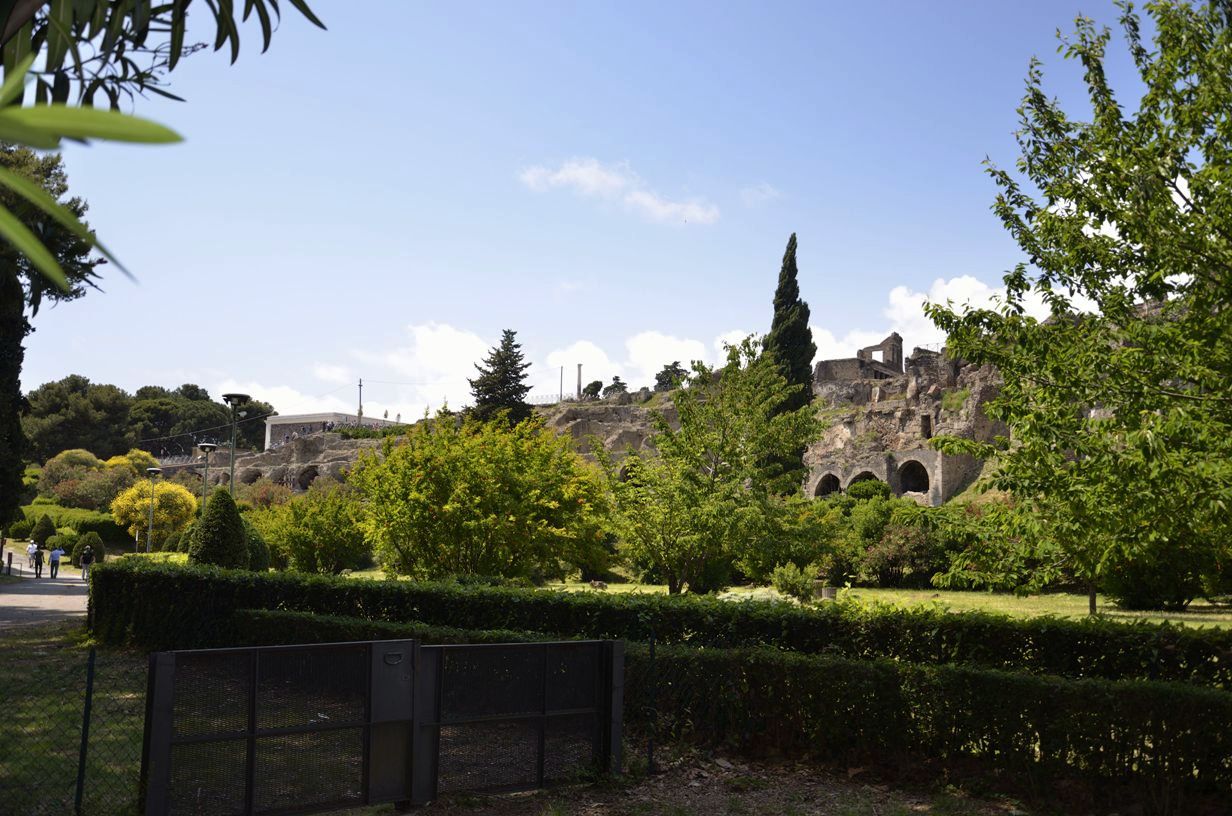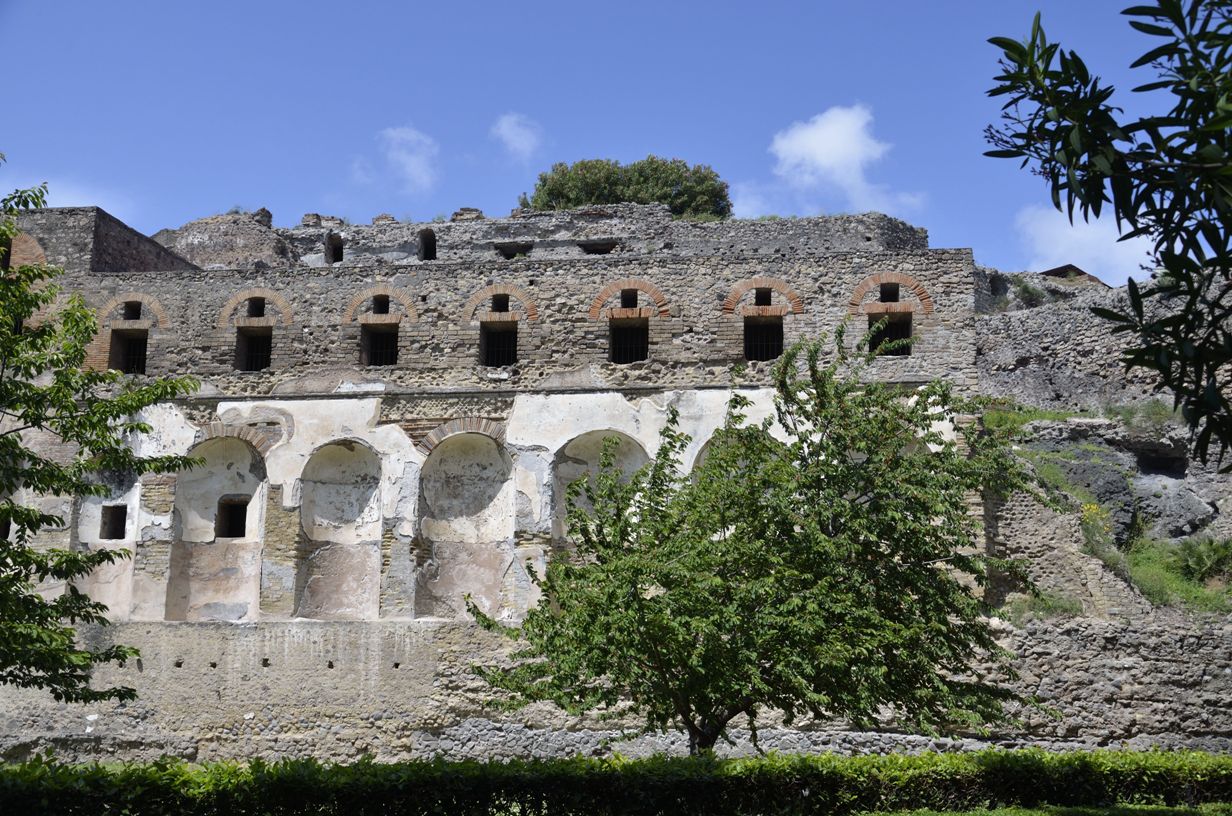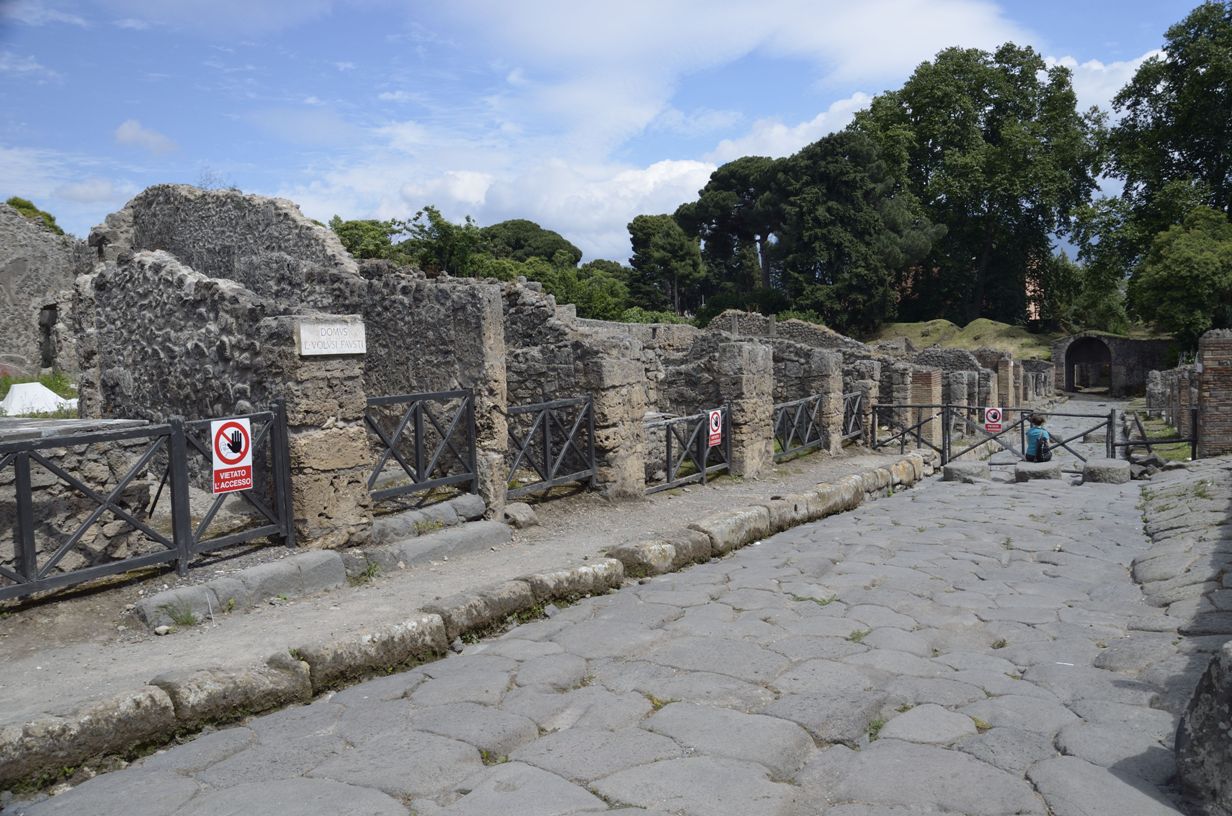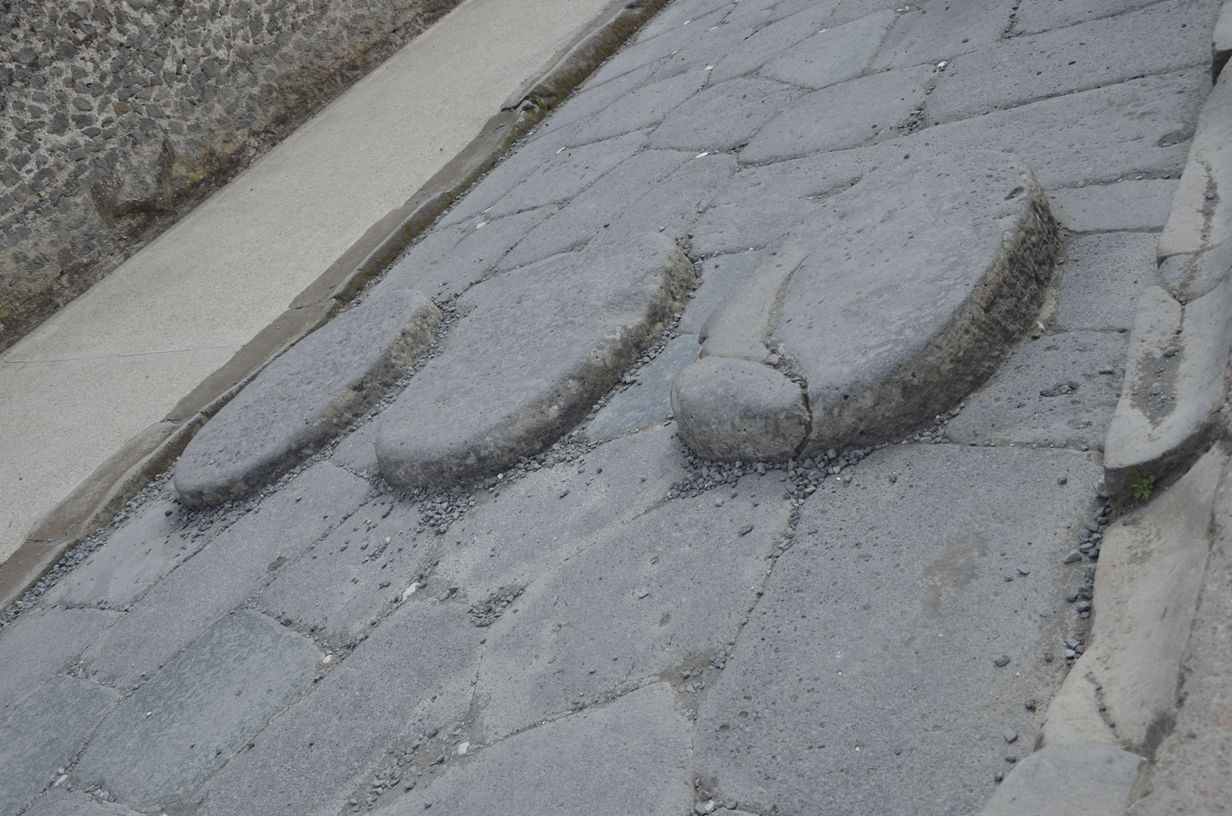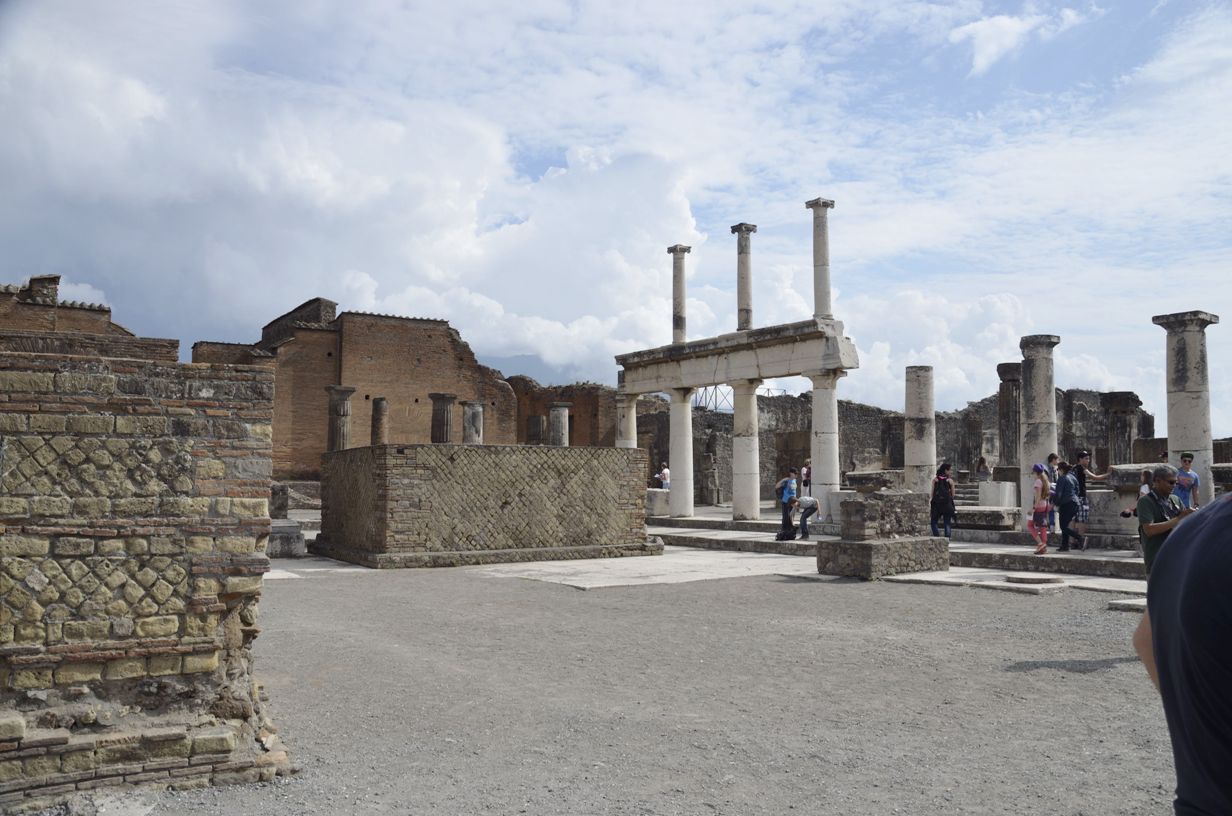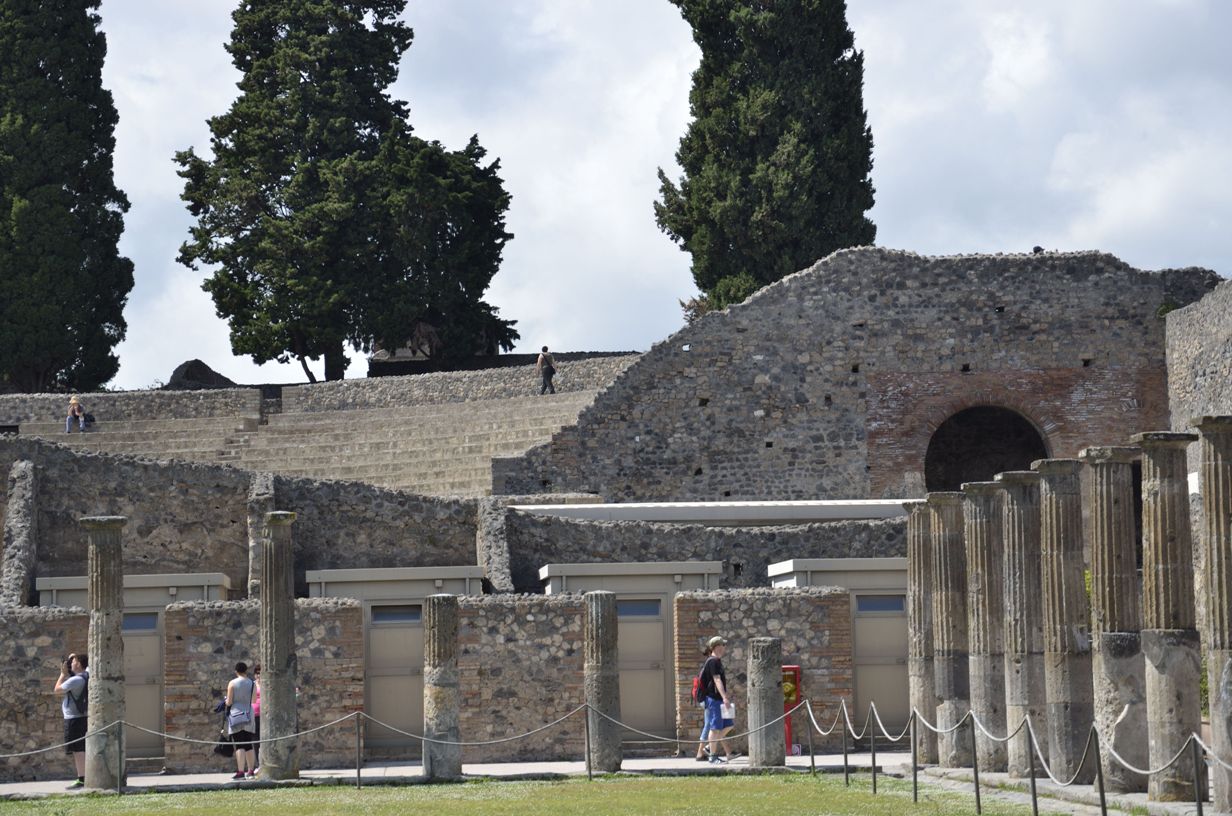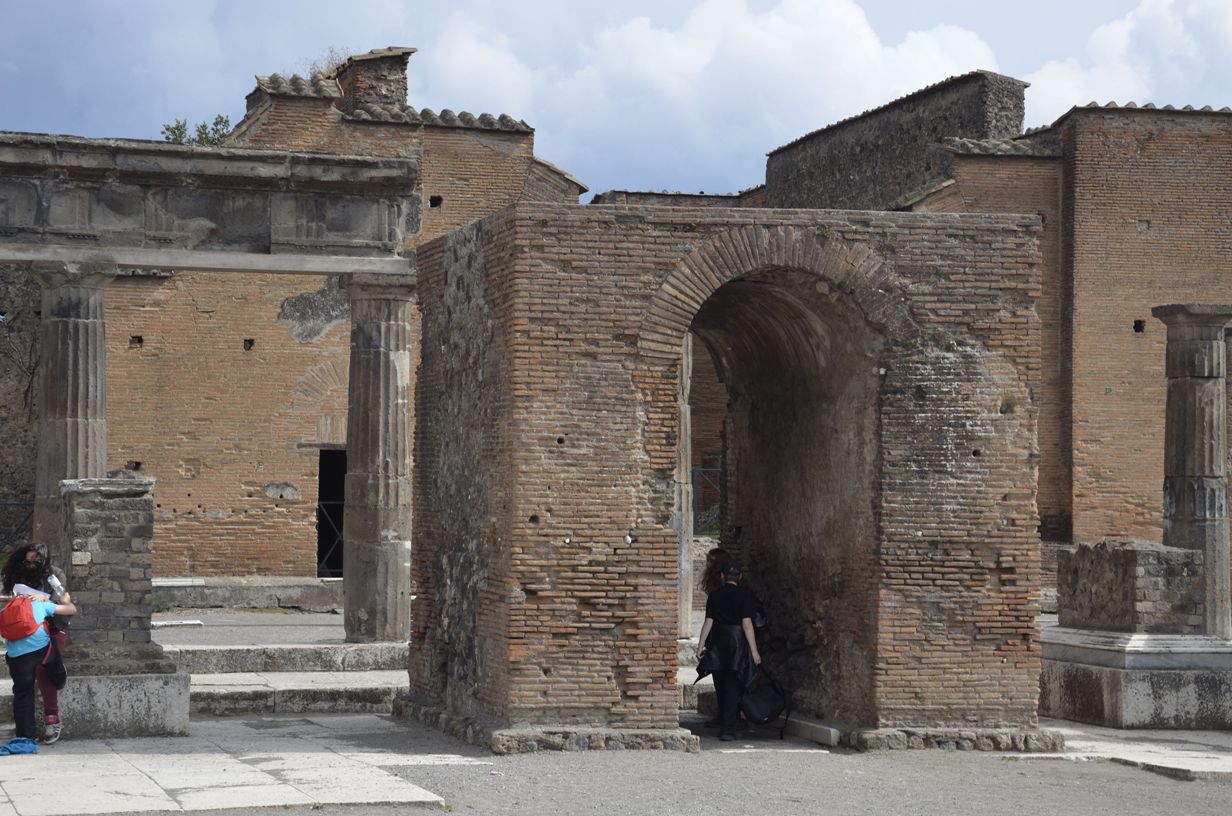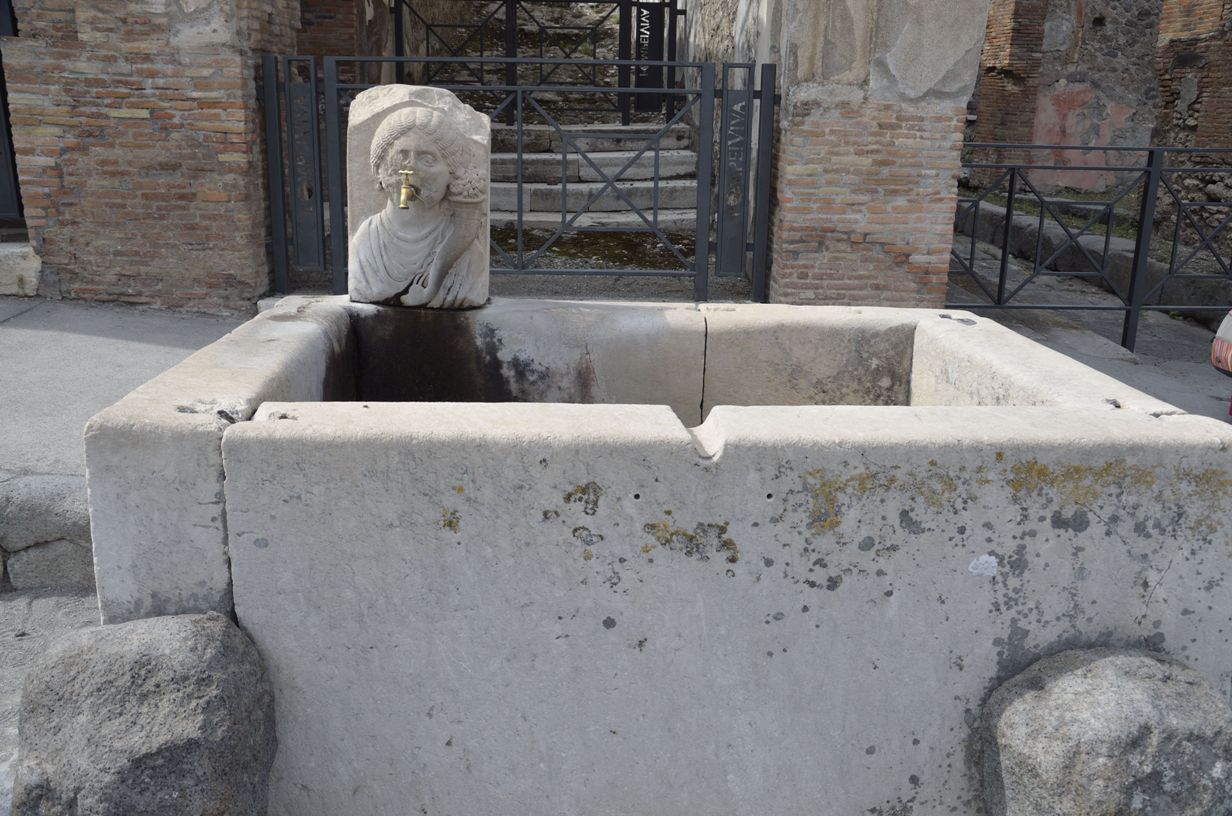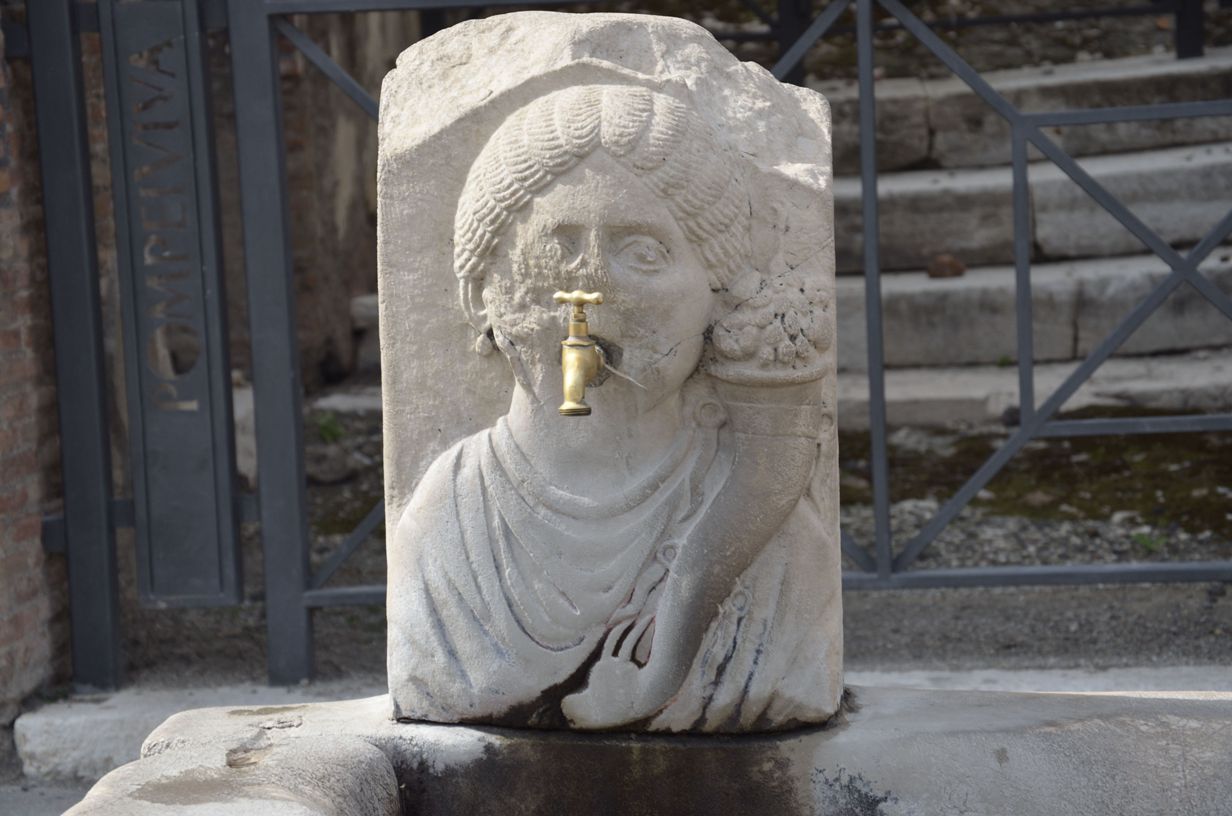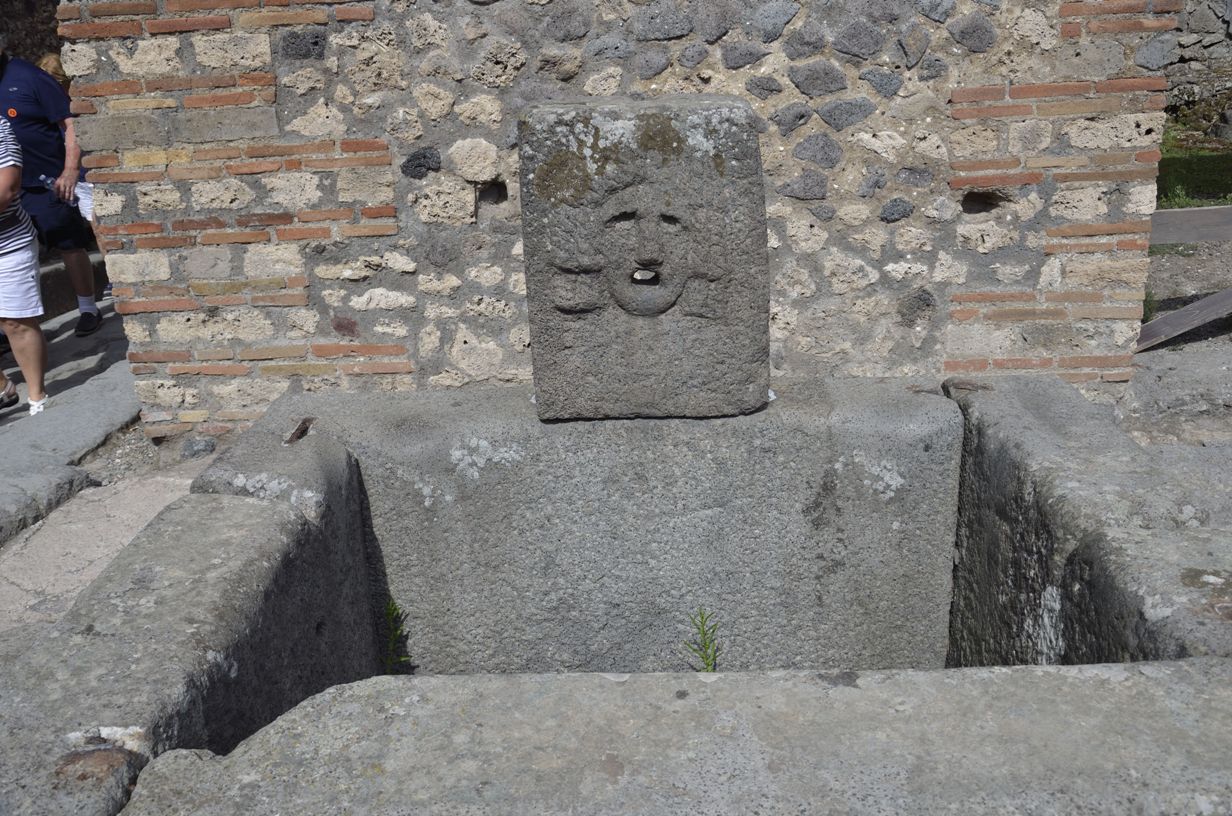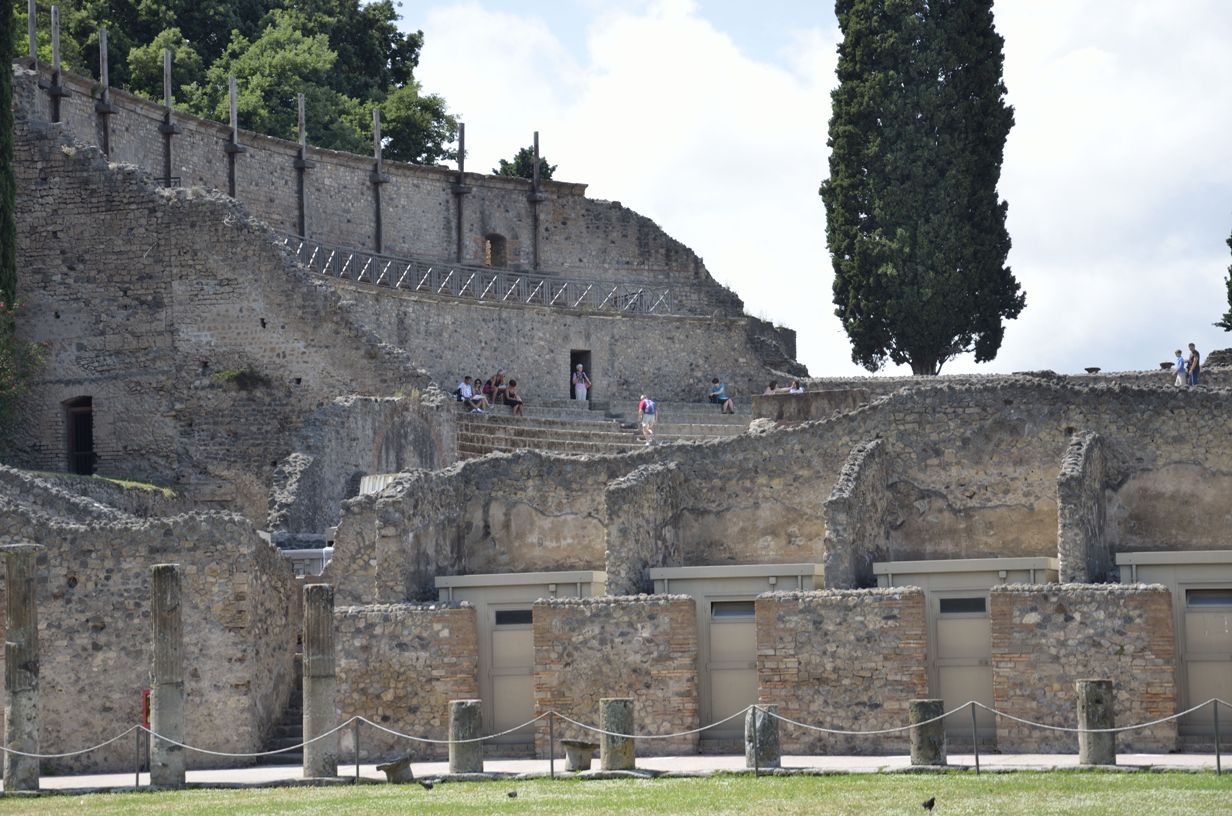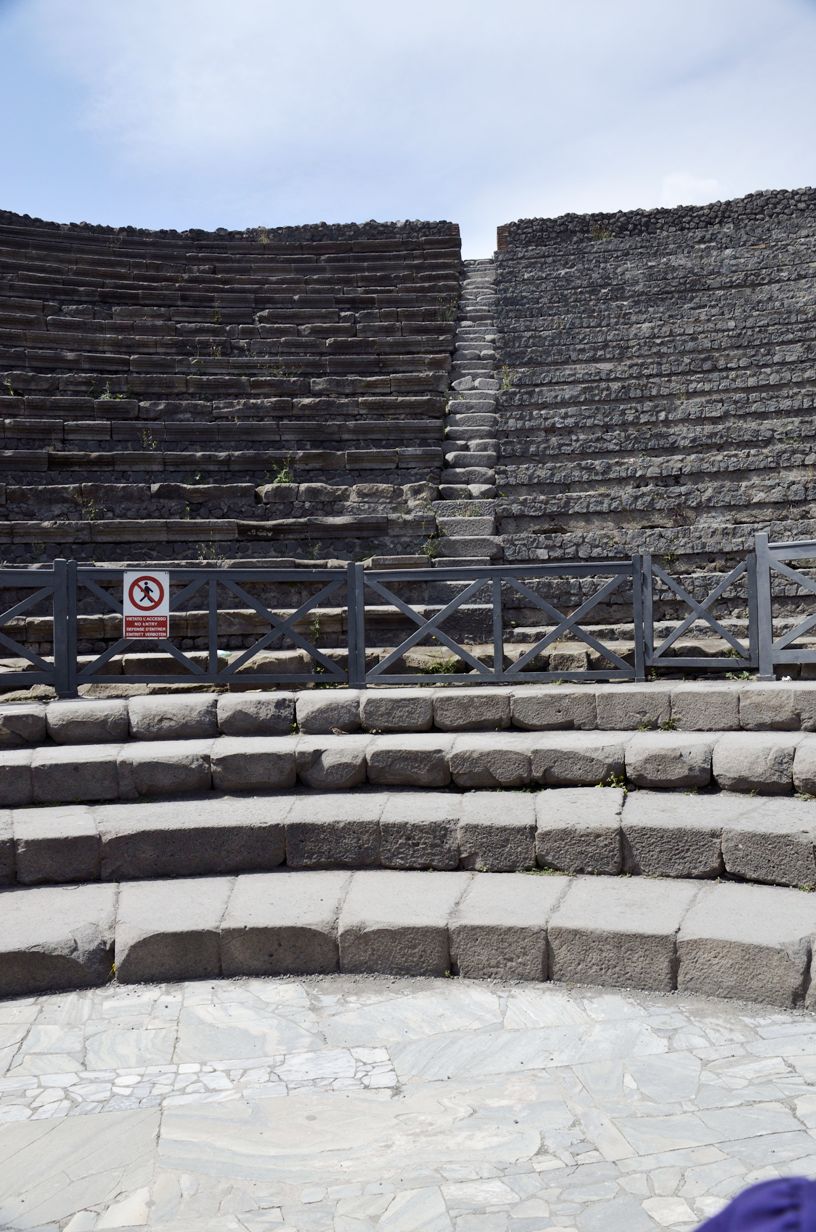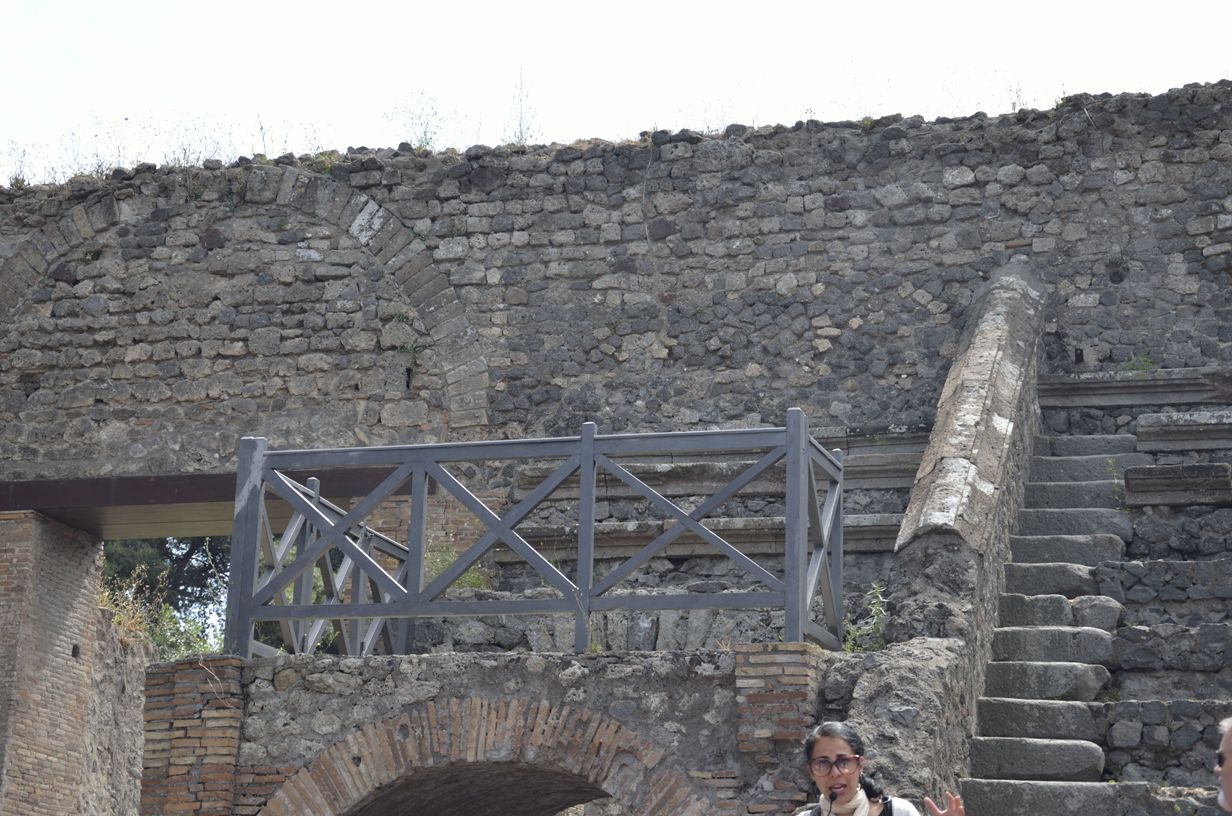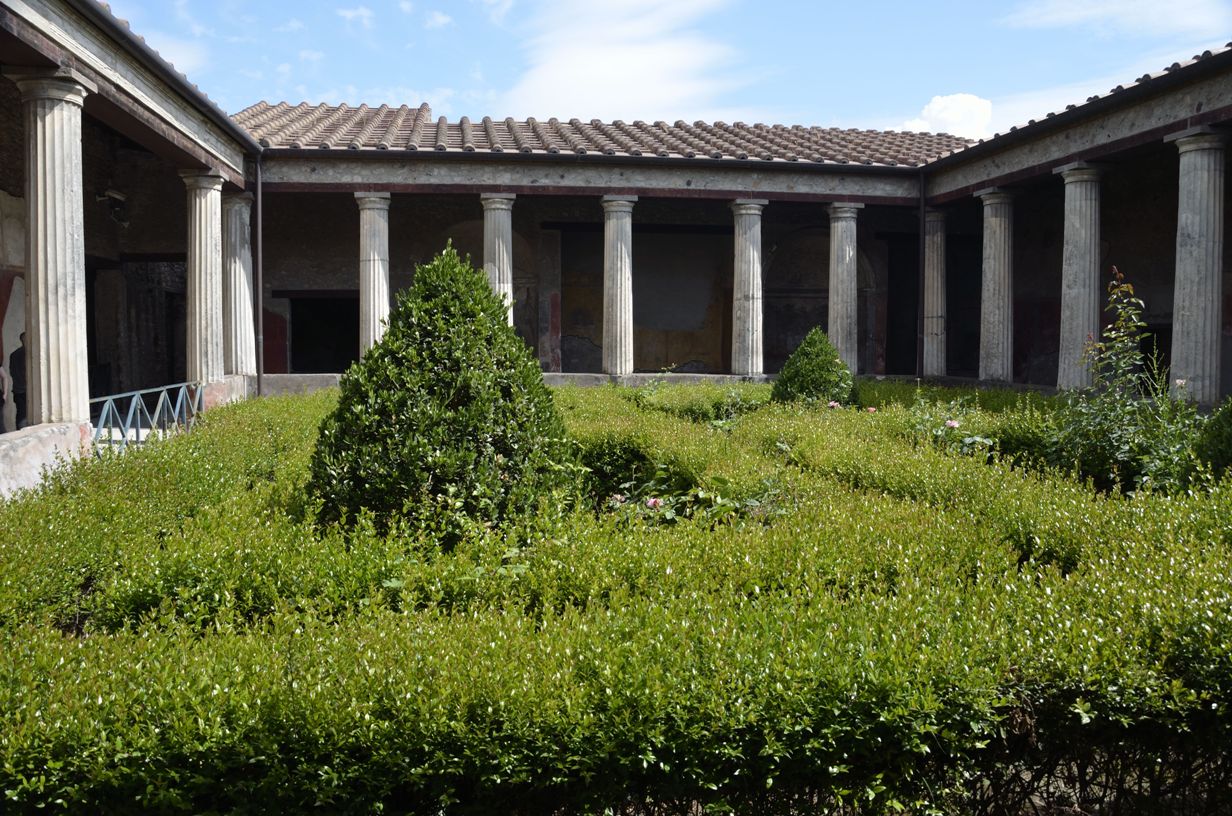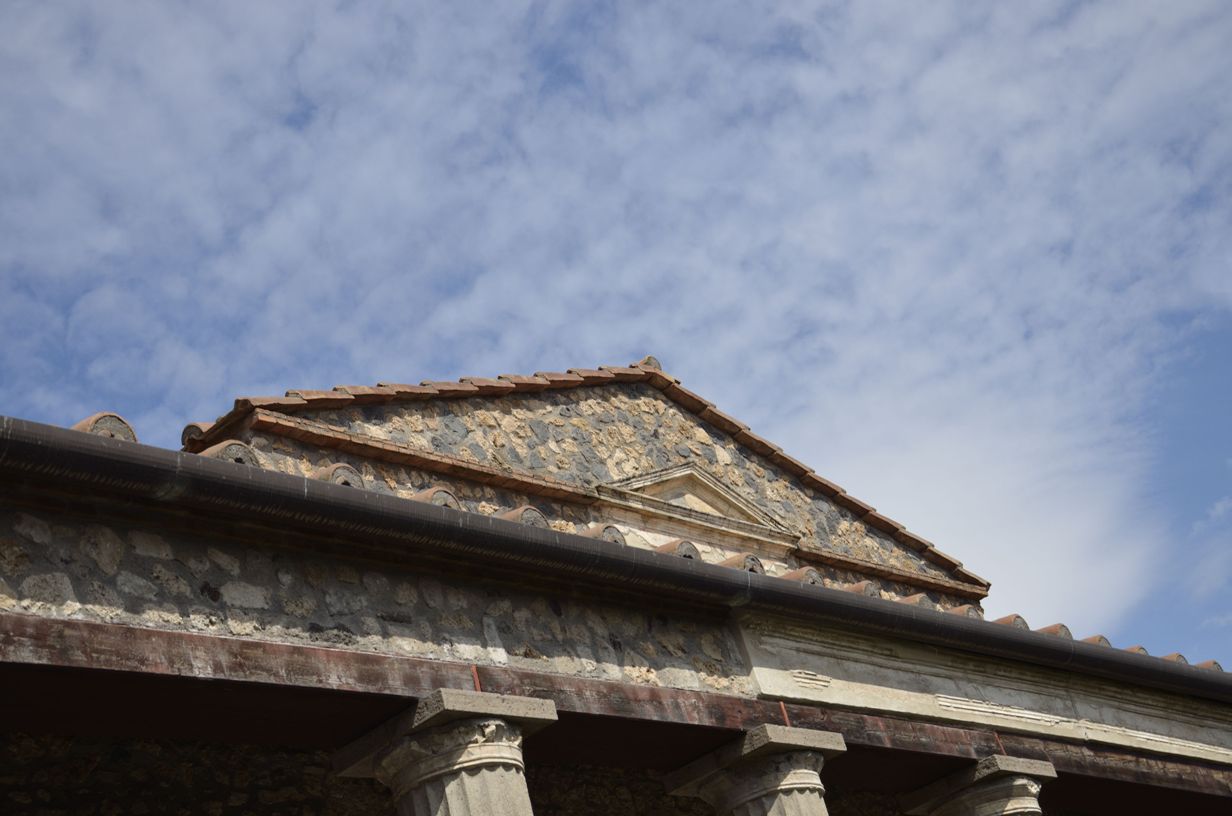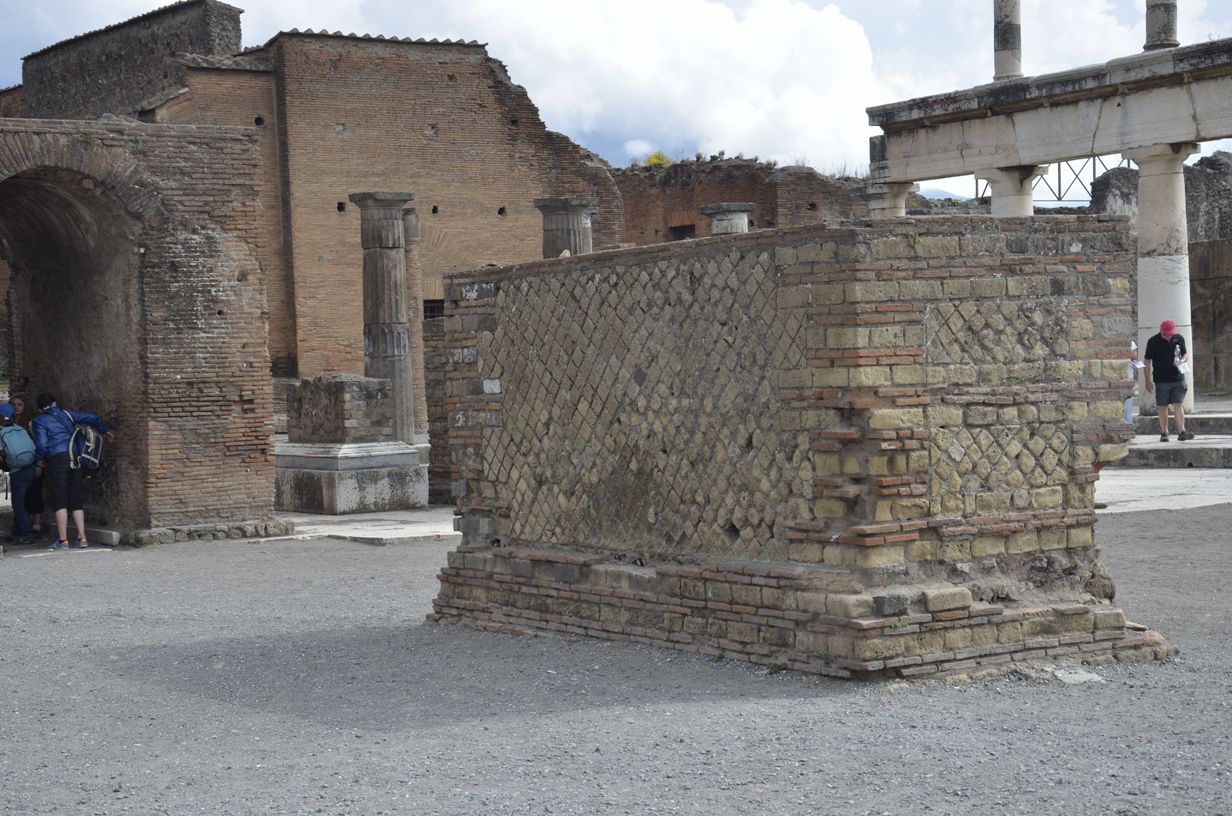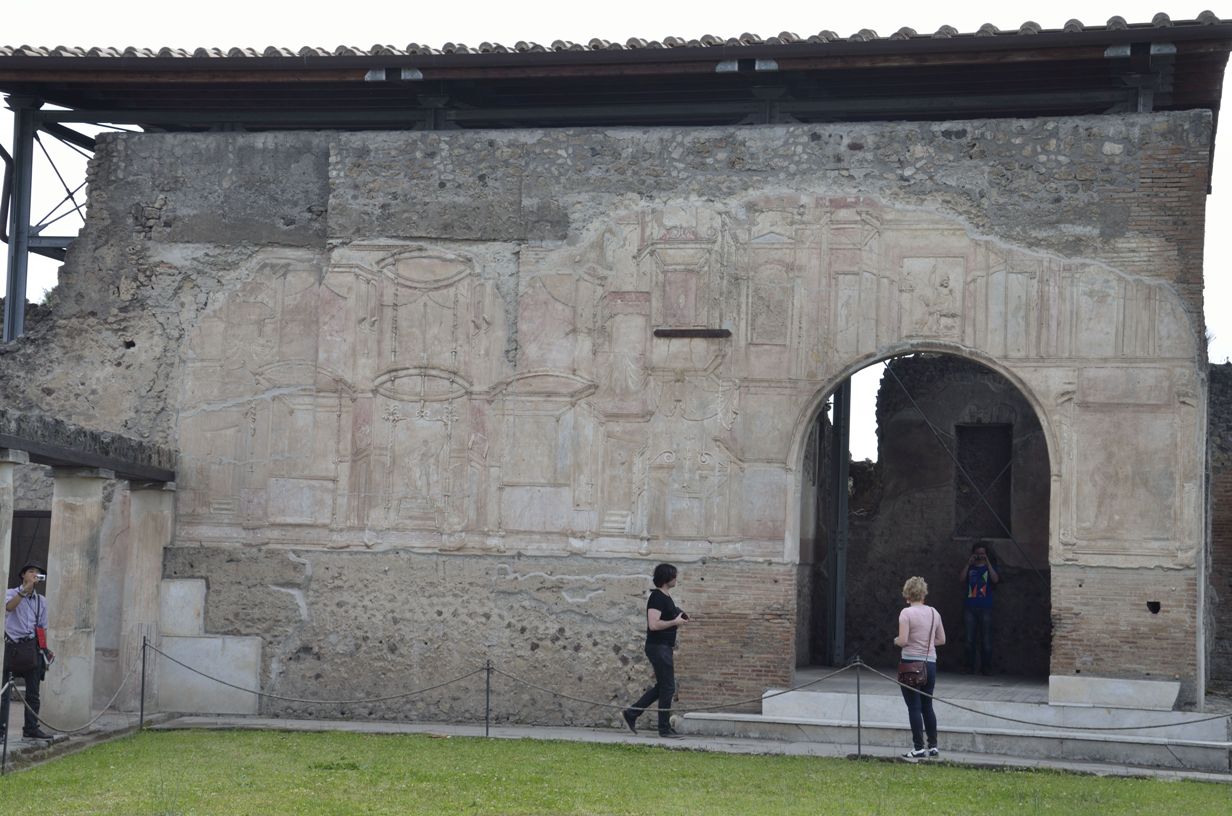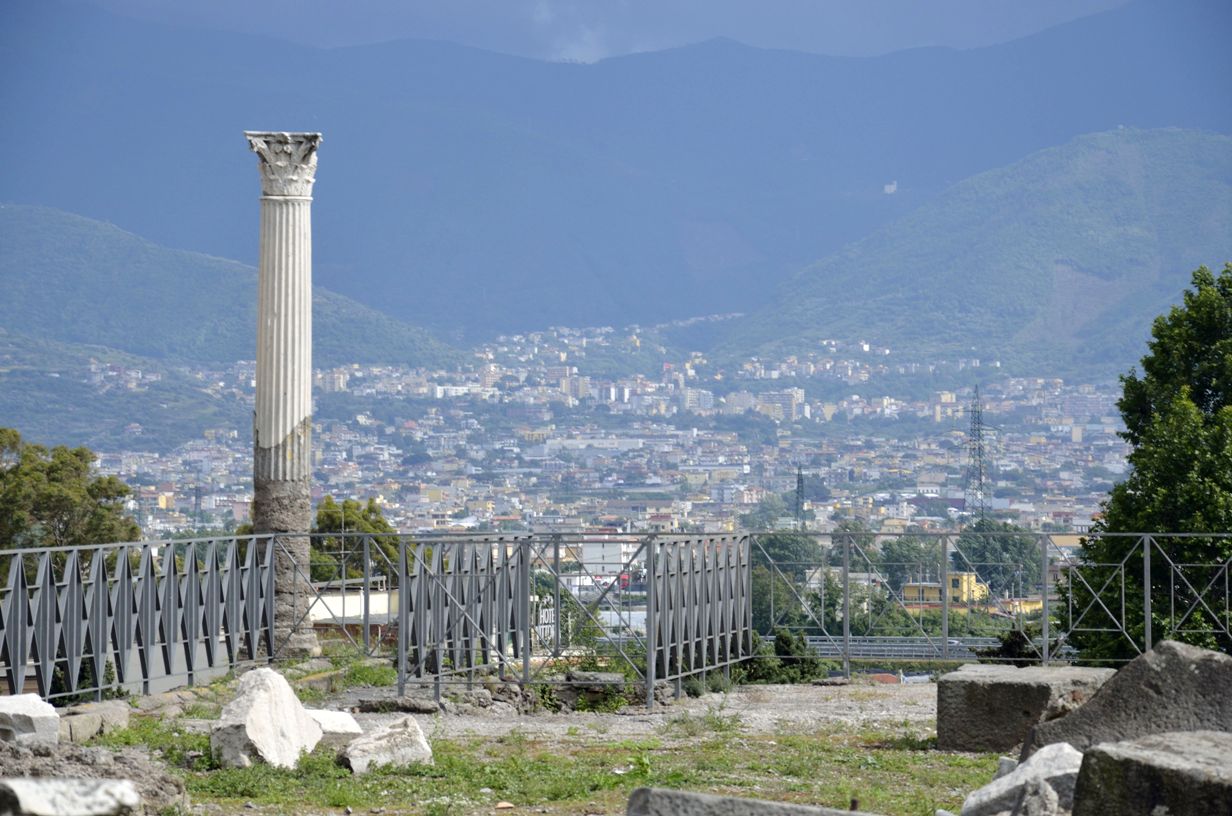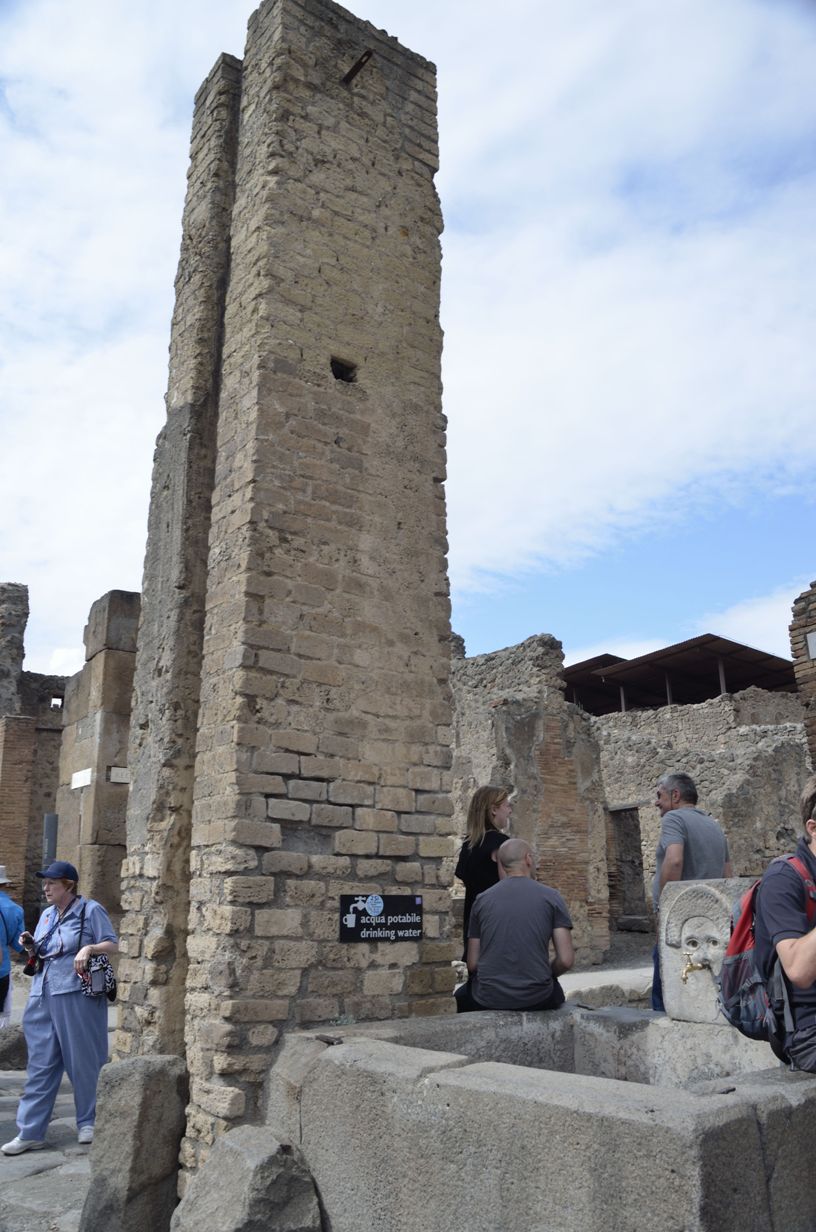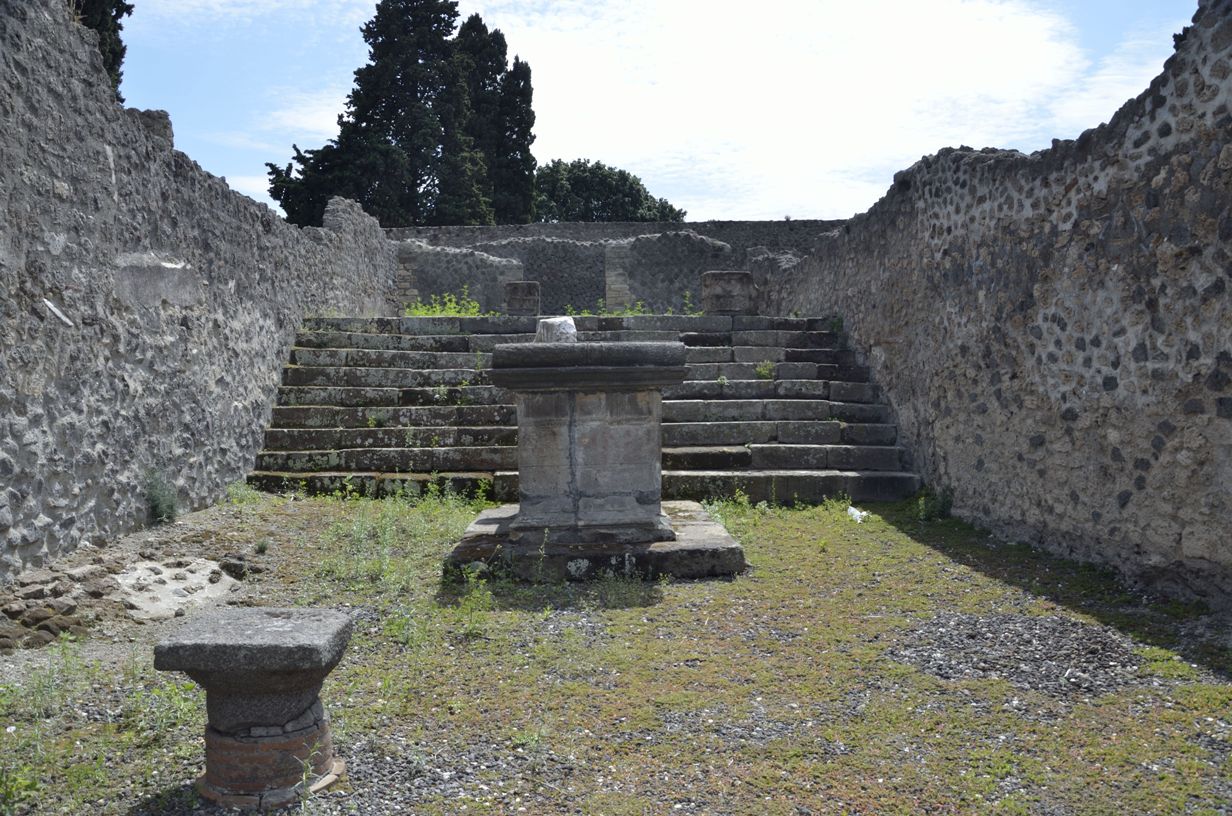
Home inside shop
The Forum
Gymnasium seating
More buildings
Public fountain
Working fountain close-up
Another fountain
Arena seating
Theater seats
Private balcony seats
Atrium: Private Home
Classic Roman Gable
Statue Base
Public Bath House
Temple of Apollo
Pompeii
After Rome took over the city in 80 b.c., they modernized it, introducing aquaducts, bath houses and numerous gravity driven water fountains that were used as signposts to facilitate navigation around the city.Pompeii had an ampitheatre that seated 15,000, a large theatre with 5000 seats and a small theatre with 1500 seats. The wealthy lived in large houses, the middle-class stayed in rooms behind their shops or in a second story above them.
The largest private house uncovered to date is 32,000 square feet!
So far 84 "fast food" restaurants have been uncovered along with 23 official brothels and 17 unofficial ones. Colorful paintings adorn the walls offering suggestions (or instructions?) to the patrons who could participate individually or in groups for half the cost of a glass of wine.
Phallic symbols carved in the stones in the streets pointed the way for eager sailors.
Mount Vesuvius erupts every 50 years or so, most recently in 1944. After centuries of lava flows into the Bay, the ruins of Pompeii now lie nearly a kilometer from the sea instead of right on the coast.
800,000 people live at the base of Mt. Vesuvius today -- many of them illegally and in restricted areas.
Modern Pompei was founded in 1891 after the building of the sanctuary, started by Bartolo Longo, who is considered the founder of the modern town.
Pompei lies on the West coast of Italy between the ruins of Pompeii and the Tyrrhenian Sea.
Temple of Apollo
© Copyright 2008 Write Sounds Entertainment, Inc. All Rights Reserved.
